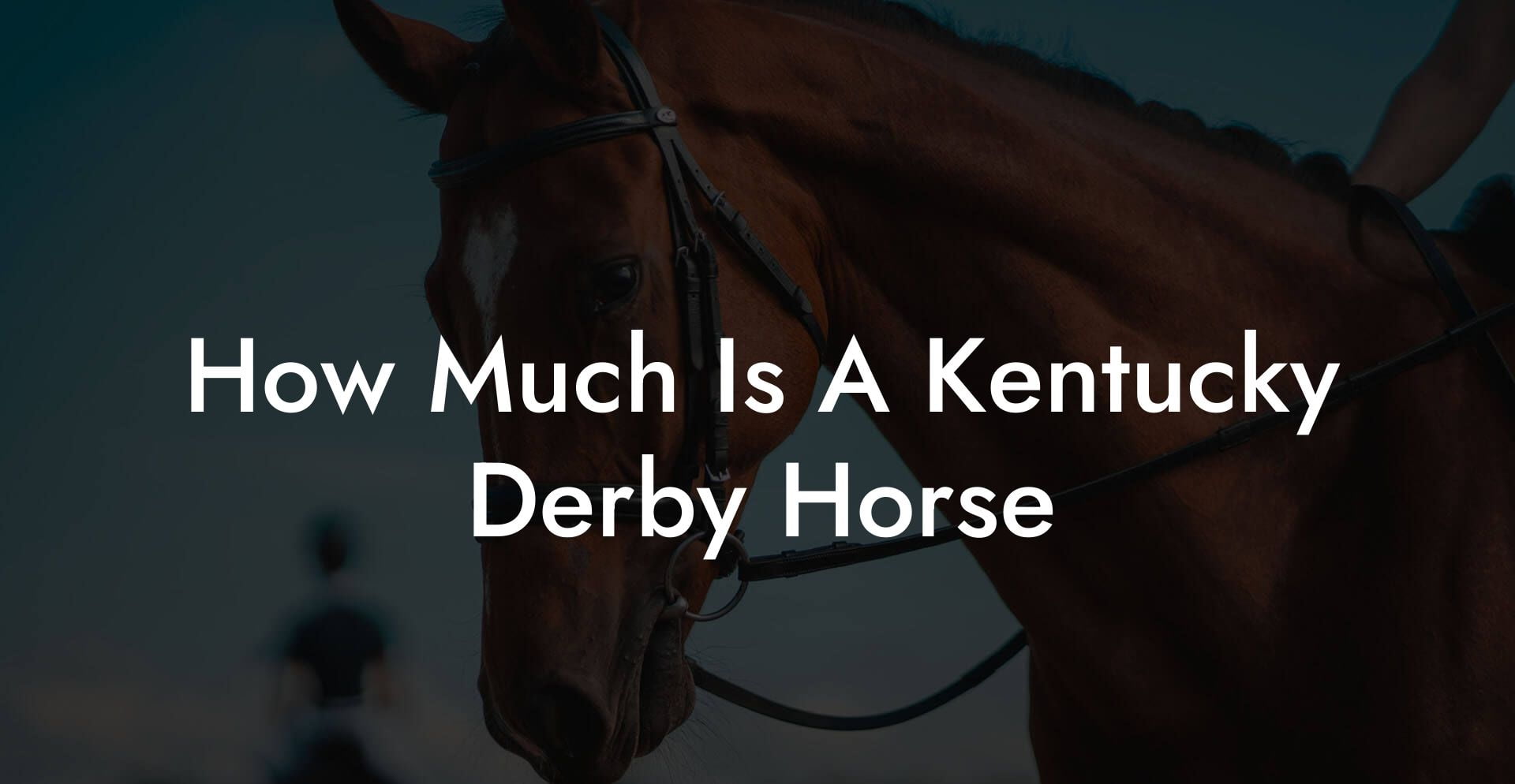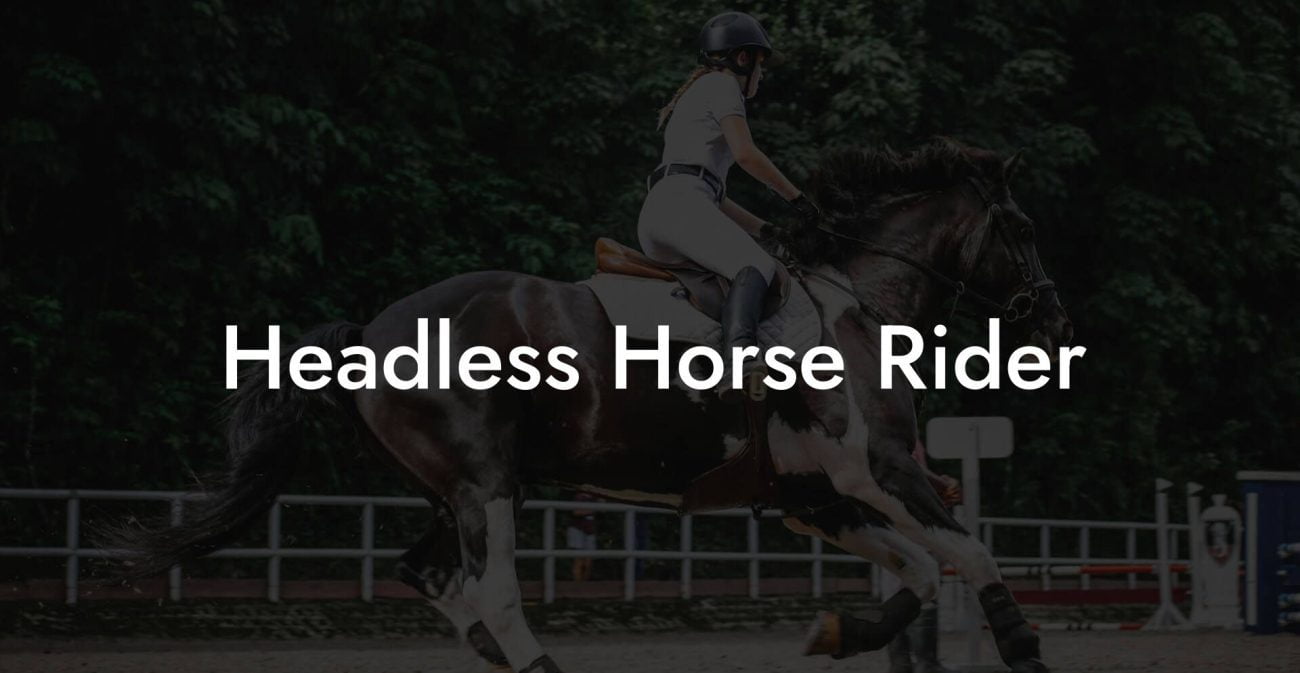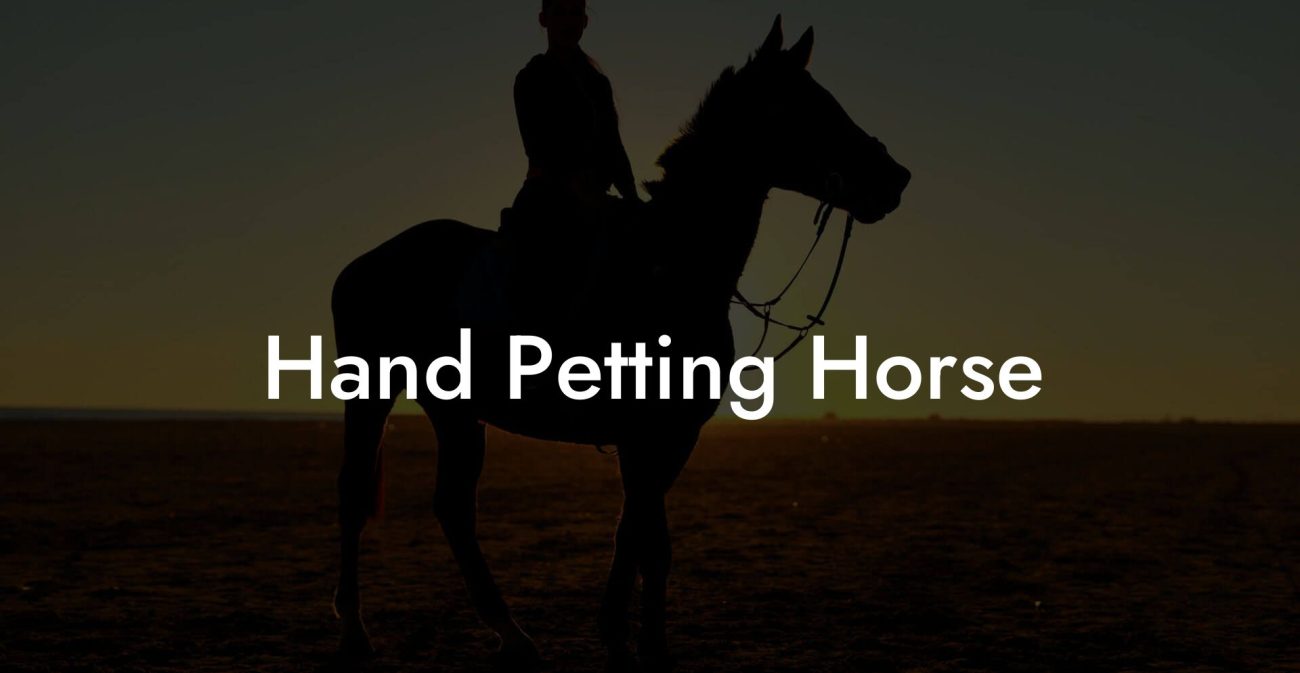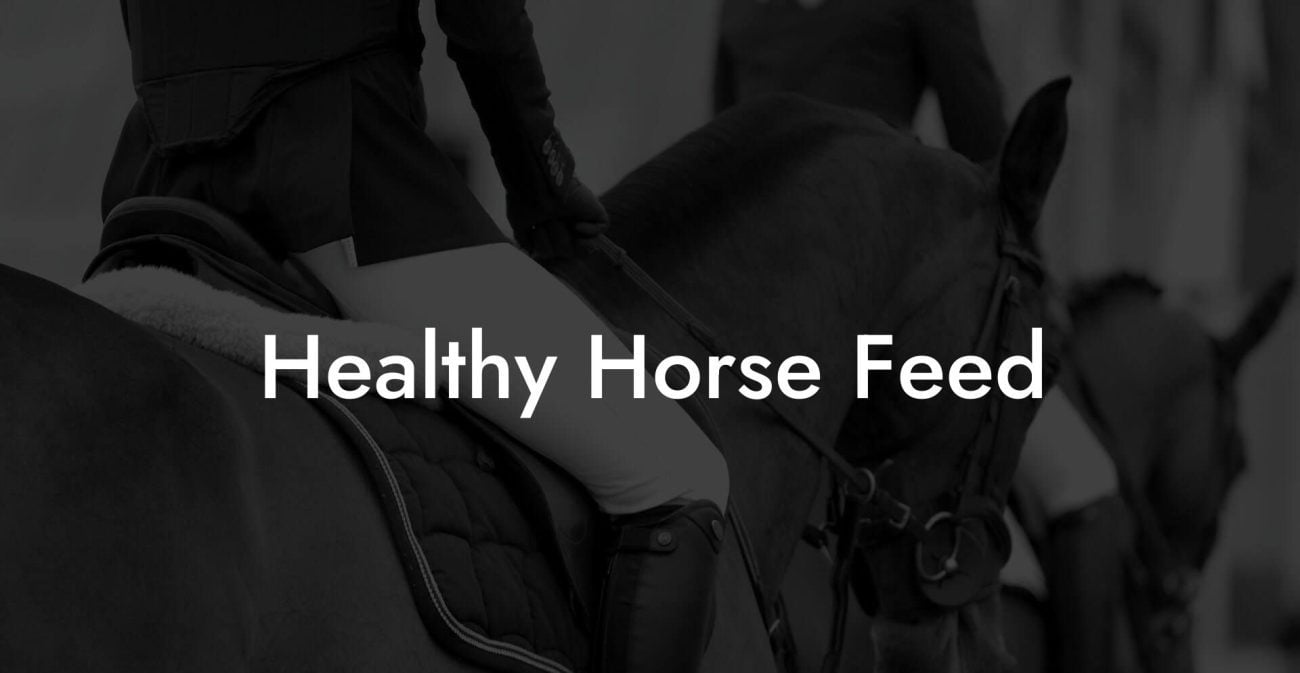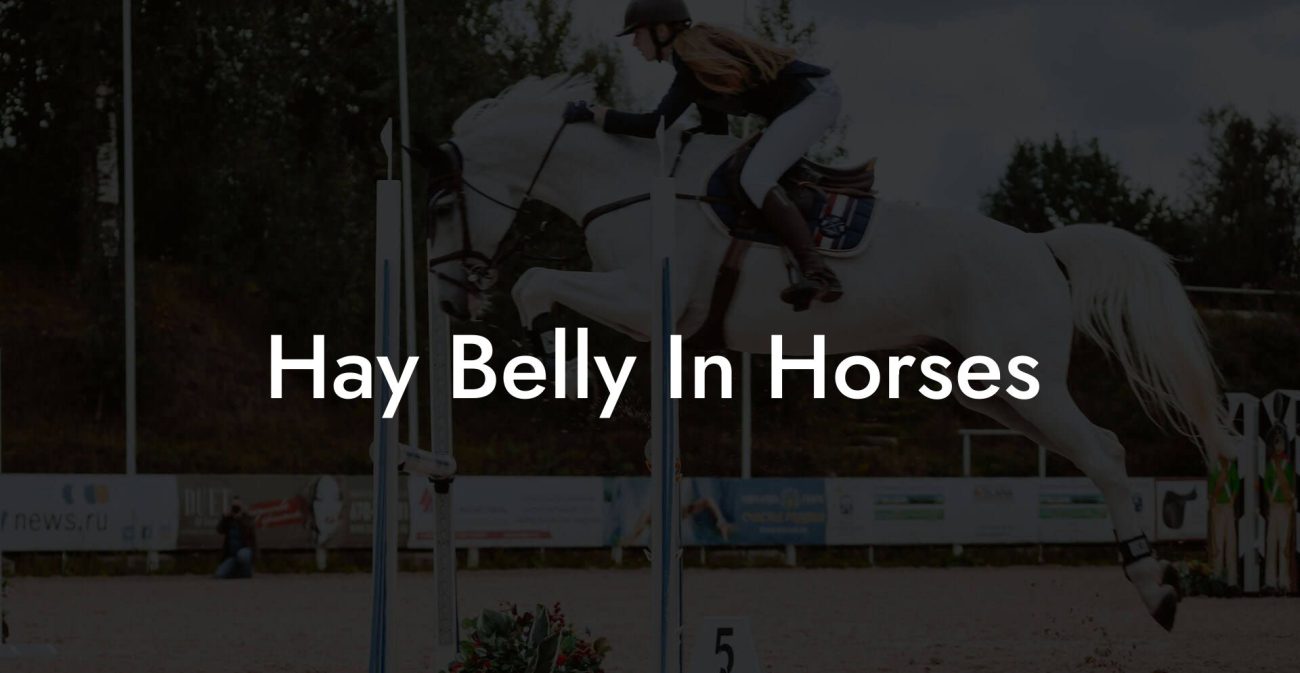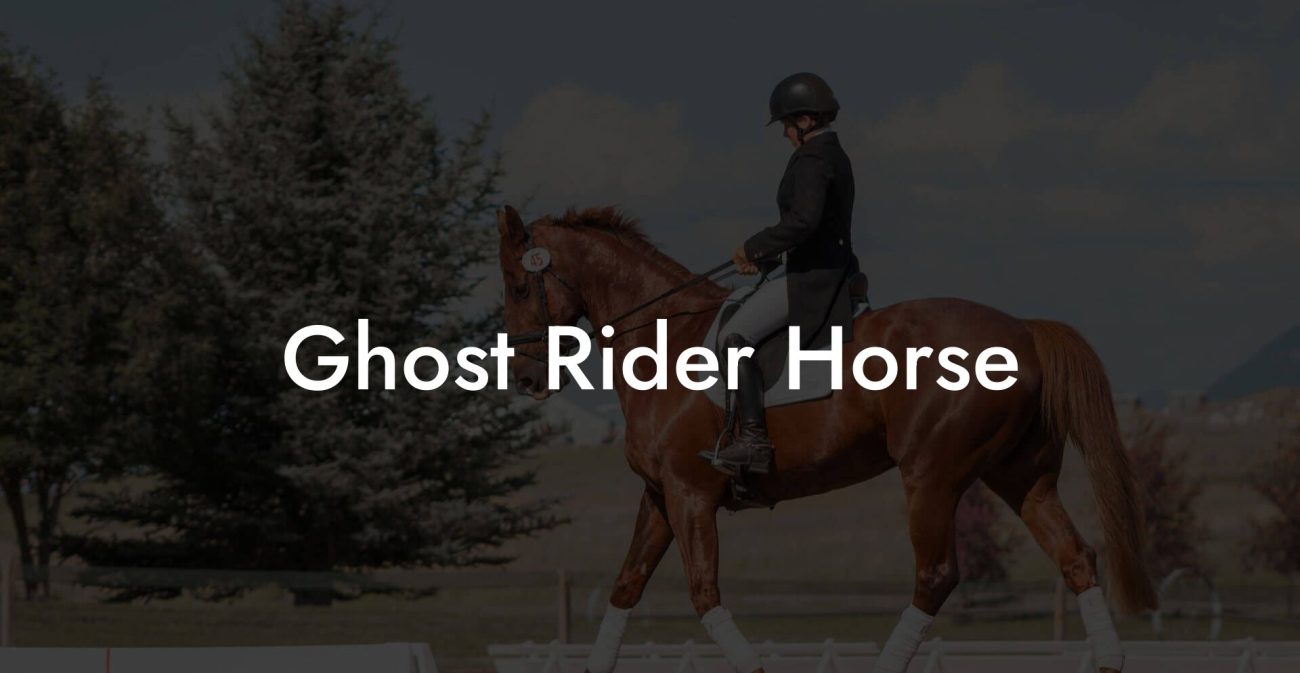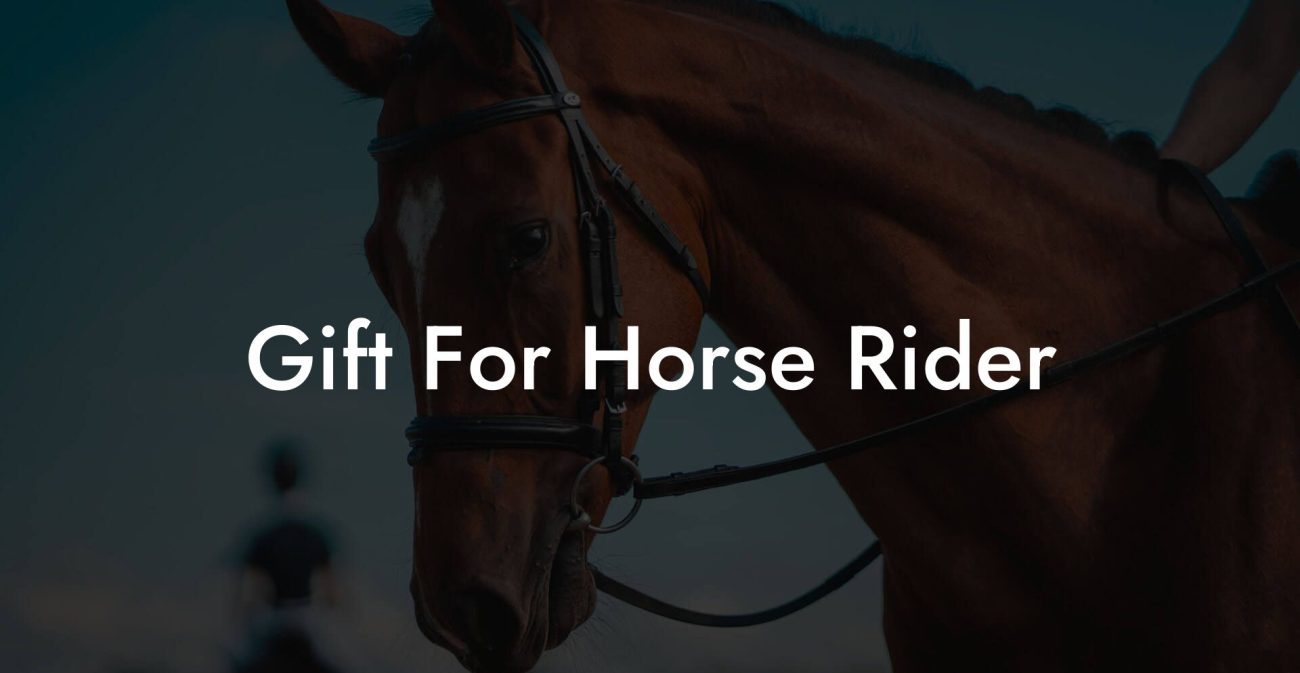Buckle up, because if you’ve ever wondered whether a Kentucky Derby horse is more like a priceless work of art or a pricey sports car, you’re in for a wild ride! While the thunderous applause of the crowd and the sweet smell of victory may capture the imagination, the price tag that comes with owning a Derby-bound stallion (or mare) is a multifaceted beast, blending pedigree, training, maintenance, and pure, unadulterated passion for the racetrack. Let’s gallop headfirst into the fascinating, and sometimes bewildering, world of equine pricing while sprinkling in some insider tips on horse care that every Gen-Z and millennial equestrian enthusiast can use to keep their four-legged friends in tip-top shape.
Quick Links to Useful Sections
- Breaking Down the Price Tag: What Exactly Is a Kentucky Derby Horse Worth?
- Factors That Influence the Cost of a Kentucky Derby Contender
- 1. Lineage and Pedigree
- 2. Performance and Training History
- 3. Age and Physical Condition
- 4. Upkeep, Training, and Maintenance Costs
- 5. Market Trends and Economic Factors
- Initial Investment vs. Long-Term Commitment: The True Cost of a Racing Dynasty
- 1. The Purchase Price
- 2. Training and Conditioning
- 3. Health and Maintenance
- 4. Race Preparation and Competition
- Essential Horse Care Tips: Keeping Your Derby Dream Alive
- Feeding and nutrition
- Regular Veterinary Check-Ups
- Grooming and Hygiene
- Exercise and Training Routines
- Holistic and Integrative Approaches to Equine Health
- The Economics of Racing: Beyond the Initial Price
- Training Techniques: Shaping a Race-Ready Champion
- Tailored Conditioning Programs
- Interval Training and Speed Work
- Stamina-Building Long Runs
- Monitoring and Technology Integration
- Investing in Your Future: Resources and Community Support - Your Next Steps
- Stories from the Track: Real-Life Case Studies in Equine Excellence
- Case Study 1: From Humble Beginnings to the Winner’s Circle
- Case Study 2: The Power of Partnership and Shared Ownership
- Case Study 3: Overcoming Setbacks with Resilient Care
- Tech Tools and Trends: The Future of Equine Investment and Care
- FAQs: Your Burning Questions on Kentucky Derby Horse Costs and Care
- The Final Lap: Embracing the Passion and Investment of Kentucky Derby Dreams
Breaking Down the Price Tag: What Exactly Is a Kentucky Derby Horse Worth?
At first glance, you might picture a handsome, sleek thoroughbred prancing around the paddock, a shimmering superstar in the making. But let’s get real, the price of a Kentucky Derby horse is no one-note figure. It can vary wildly based on numerous factors including bloodline, performance history, age, training progress, and even the moxie it displays on race day.
The baseline price for a Kentucky Derby prospect can range from tens of thousands of dollars to a jaw-dropping multi-million-dollar investment. In many cases, a horse with an illustrious pedigree and a history of winning remarkable races can command a price that seems more akin to a luxury sports car than a farm animal. However, for enthusiasts just starting out who are keen to dip their toes into racing, there are opportunities in the form of shared ownership or acquiring horses from modest beginnings with room to grow.
But here’s the twist, in the world of thoroughbred racing, the initial purchase price is only one chapter in the story. Just like any superstar in the making, a horse’s real worth evolves over time, contingent on performance improvements and the magic of potential wins at the track. The financial journey doesn’t just end at the racetrack finish line; it encompasses years of exceptional training, top-notch care, and the occasional glittering victory that transforms a mere animal into an investment powerhouse.
Factors That Influence the Cost of a Kentucky Derby Contender
So, what exactly boosts or brakes the cost of a Kentucky Derby horse? Here’s a breakdown of the major elements that can turn a modest purchase into a prized gem, or conversely, make a high-priced animal feel like you’ve thrown money into a wishing well.
1. Lineage and Pedigree
In the world of horseracing, pedigree isn’t just a buzzword, it’s the very essence of what cements a horse’s reputation. Horses bred from champion champions, with bloodlines studded with winners of prestigious races, are often priced at a premium. The same way your favorite designer brand carries a higher price tag because of its legacy, a horse with an illustrious lineage tells a story of excellence, endurance, and the promise of future triumphs.
2. Performance and Training History
A horse’s performance record is a window into its potential on race day. If a horse is already showing promising times on the track or has racked up wins in smaller stakes races, its price will naturally increase. Training regimens, including speed work and stamina-building routines, also add to the overall investment because they’re vital in transforming raw talent into championship-caliber performance.
3. Age and Physical Condition
Much like how a vintage flip phone can either be considered a retro collectible or a clunky relic, the age and physical condition of a horse can be a double-edged sword. Younger horses may be cheaper because they’re still in the developmental stage, but they come with the risk of unpredictability. On the other hand, fully matured horses with proven track records can command higher prices due to their reliable performance, albeit with the caveat that their racing career may be nearing its end.
4. Upkeep, Training, and Maintenance Costs
Once you’ve bagged your equine superstar, the fun (and expenses) don’t stop there! Proper horse care is a full-time commitment that includes stable fees, specialized diets, regular vet check-ups, grooming essentials, and training sessions. The overall cost of maintenance can be staggering, but it’s this kind of dedication that often makes the difference between a contender and a champion.
5. Market Trends and Economic Factors
Just like trendy sneakers or tech gadgets, market dynamics play a huge role in determining a horse’s price. Economic factors, the overall health of the equine industry, and even global events can influence demand and drive prices up or down. A hot market can see bidding wars where prices soar, while a cooling period might offer a golden opportunity for a savvy buyer.
When you combine these factors, the cost of acquiring a Kentucky Derby horse becomes a complex cocktail of genetics, performance, care, and market savvy. And while no two horses are exactly alike, this multifaceted approach to valuation transforms each purchase into a unique adventure.
Initial Investment vs. Long-Term Commitment: The True Cost of a Racing Dynasty
If you think that buying a Kentucky Derby horse is a one-and-done deal, think again. The initial acquisition is merely the first step in a journey that resembles a marathon rather than a sprint. Let’s break down the lifecycle of that hefty investment:
1. The Purchase Price
The purchase price is the upfront cost you shell out at the time of sale. This number is often determined by the breed, reputation of the bloodline, and even the current hype around a particular horse. It’s not unusual for top-tier thoroughbreds to cost anywhere from $100,000 to several million dollars.
2. Training and Conditioning
Once the purchase is complete, the training process begins, a rigorous and personalized schedule designed to unlock the full potential of your horse. This phase involves hiring expert trainers, managing specialized workouts, and sometimes even international trips to premium training facilities. The investment here can be substantial, but it’s what takes a horse from being a promising rookie to a full-blown Derby contender.
3. Health and Maintenance
Think of regular vet visits, preventive care, dental check-ups, high-quality feed, therapeutic massages, and cutting-edge technology like equine-rehabilitative equipment. Every aspect of a horse’s well-being is meticulously managed, and quality care is non-negotiable if you’re in the pursuit of racing glory.
4. Race Preparation and Competition
Preparing for the Kentucky Derby means more than just fast workouts. It involves substantial travel, entry fees, subscriptions to racing analytics, and even special diets that give your champion that extra edge. Each race is both a test of capability and an opportunity to dramatically enhance your horse’s market value, if victory is on the horizon.
In essence, buying a Kentucky Derby horse is very much like investing in a startup or a high-end collectible. The initial capital outlay is only the tip of the iceberg, with ongoing expenses that could stretch well into the tens (or hundreds) of thousands of dollars each year. It’s a labor of love, fueled by passion, ambition, and the exhilarating hope that one day, that horse could rewrite history on the racetrack.
Essential Horse Care Tips: Keeping Your Derby Dream Alive
While the price tag might be enough to make your head spin, the real heart of the matter is ensuring that your horse remains a healthy, happy, and high-performing athlete. Whether you’re diving into the racing world or simply embracing equestrian life, here are some key horse care tips that blend the science of veterinary expertise with a splash of holistic wisdom.
Feeding and nutrition
Just as you’d source the freshest avocado toast or the trendiest vegan burger, your horse deserves a diet designed to enhance both performance and longevity. Quality hay, a balanced mix of grains, and designated supplements ensure that your four-legged friend remains energized and optimal. Think of it as the organic, locally sourced meal plan for your equine superstar.
Maintaining proper hydration is also crucial. Regular access to clean, fresh water is non-negotiable for sustaining muscle performance and overall health. Whether your horse is galloping on the track or enjoying a pasture break, hydration is an essential part of its daily regimen.
Regular Veterinary Check-Ups
To keep any high-performance animal at peak condition, regular check-ups are indispensable. A trusted veterinarian will monitor the horse’s health, manage vaccinations, screen for infections, and keep an eye on developmental progress. Regular health assessments help you catch issues early before they become serious, and potentially costly, problems.
Grooming and Hygiene
Beyond the glitz and glamour of the racetrack, maintaining a grooming routine is essential for both the aesthetics and well-being of your horse. Regular grooming sessions not only keep the coat shiny and free of parasites but also serve as bonding time. Proactive hoof care, routine baths, and attention to mane and tail conditioning contribute to both comfort and performance.
Exercise and Training Routines
Just like hitting the gym or joining a dance class, a regular exercise schedule is vital. Focused training with a specialized coach will target muscle groups essential for speed, endurance, and agility. Mixing intensive track workouts with low-impact cool-down sessions achieves the perfect balance between peak performance and injury prevention.
Keep an eye on your horse’s stress levels, too; a relaxed, content animal performs better. In fact, studies suggest that a happy horse has a longer, healthier career on the track. Infuse some fun into training sessions with novel exercises or even interactive games to stimulate the mind along with the body.
Holistic and Integrative Approaches to Equine Health
Modern horse care is more than just a series of checklists, it’s increasingly embracing integrative practices that blend advanced science with time-honored traditions. Many trainers now incorporate routines that include equine massage, acupuncture, and even mindfulness practices (yes, horses can benefit from a calm, focused mind too!). These holistic treatments can reduce stress, improve circulation, and accelerate recovery after those grueling race days.
Whether you’re a seasoned owner or new to the racing scene, adopting these care protocols not only preserves your horse’s physical health but also nurtures a strong, trust-based bond between you and your equine partner. After all, the best investments aren’t just financial, they’re defined by the love, care, and dedication you pour into every step of the journey.
The Economics of Racing: Beyond the Initial Price
While shelling out money for a Kentucky Derby horse is unquestionably an adrenaline-inducing experience, understanding the economics of horse racing is like unraveling a sophisticated tapestry of passion, market trends, and high-stakes decisions. Here, the conversation shifts from raw costs to the broader implications of investing in a racing dynasty.
Return on Investment: The potential payoffs in the racing world are legendary. A win in a prestigious event like the Kentucky Derby often catapults a horse’s value into the stratosphere, transforming it into a coveted breeding prospect. Offspring from a successful racehorse can fetch astronomical sums, meaning that a smart initial investment might yield revenues that far exceed your wildest dreams.
Resale and Syndication: Not every horse owner rides the race after retirement from the track. Many choose to syndicate their horses, offering shares to multiple investors. This shared ownership not only mitigates risk, but also creates a scenario where strategic resale or lucrative stud fees elevate the overall return.
Market Volatility: Like every dynamic market, the equine industry is also subject to ups and downs. Global economic shifts, emerging competitors, and even shifts in consumer sentiment can drive prices in unexpected directions. Savvy buyers learn to read the market trends, sometimes purchasing undervalued horses during a downturn and reaping rewards when the tide turns in their favor.
Breaking down the money side of things, the Kentucky Derby isn’t just a race, it’s an investment arena where passion meets precision economics. By understanding both the immediate costs and the long-term potential, you transform the act of buying a horse into a strategic maneuver in a fast-paced, ever-evolving market.
Training Techniques: Shaping a Race-Ready Champion
A Kentucky Derby horse’s journey to glory hinges on a well-crafted training regimen that molds raw potential into a polished, race-ready champion. Balancing discipline with a bit of flair, training routines are as complex as they are fascinating. Whether you’re managing a budding thoroughbred with raw energy or fine-tuning an experienced racer, here are some training techniques that shed light on both the art and science of preparation.
Tailored Conditioning Programs
Like our morning coffee routines that give us the energy to power through the day, horses need customized conditioning programs that build endurance, speed, and flexibility. Top trainers design programs that adjust to each horse’s unique physiology, gradually increasing the intensity of workouts while ensuring sufficient recovery time.
Interval Training and Speed Work
The thrill of the race is all about bursts of intense speed followed by tactical recovery. Sharp interval training sessions simulate race conditions, teaching the horse how to pace itself and respond to sudden surges. Think of it as the equine version of high-intensity interval training (HIIT), where every second counts.
Stamina-Building Long Runs
While speed may be the star of the show, the ability to sustain performance throughout a long race is equally important. Incorporating endurance runs helps build the stamina needed to power through the entire track. These sessions often take place on varied terrains, challenging the horse to adapt and optimize its gait and breathing patterns over extended periods.
Monitoring and Technology Integration
In the era of tech-savvy athletes, horses aren’t left behind. Modern trainers use biofeedback tools and wearable technology to monitor a horse’s heart rate, stride, and overall muscle engagement. This data-driven approach allows coaches to fine-tune training regimens, ensuring that every session is both effective and safe. It’s like having a personal fitness tracker for your equine partner!
These techniques underscore that training is not a one-size-fits-all formula but an evolving art form that requires continuous adaptation. By embracing cutting-edge technology alongside proven traditional practices, trainers cultivate champions who are as smart as they are fast.
Investing in Your Future: Resources and Community Support - Your Next Steps
Whether you’re taking your first steps into the thrilling world of horseracing or you’ve already got a few races under your belt, there’s a vibrant community and a wealth of resources waiting to support you. Networking with fellow enthusiasts, attending industry seminars, joining online forums, and following popular equestrian influencers can all provide invaluable insights and moral support.
Take advantage of local equestrian clubs, regional races, and even virtual webinars that dive deep into the intricacies of horse care and racing economics. These resources not only sharpen your technical know-how but also foster a sense of belonging, a reminder that in this high-octane world of Kentucky Derby dreams, you’re never alone.
The journey of investing in a Kentucky Derby horse is as much about understanding rigorous economics and training protocols as it is about forging a deep, meaningful bond with your equine companion. Surround yourself with mentors, peers, and industry experts who share your passion. They’ll help you navigate the winding trails of horse ownership, from selecting the right prospect to maintaining champion-level care.
Your next steps might include researching local breeders, setting up consultations with equine nutritionists, or even taking a crash course in equine first-aid. The more informed you become, the smoother the ride will be. After all, every legendary journey starts with a single step, and a well-groomed hoof.
Stories from the Track: Real-Life Case Studies in Equine Excellence
Sometimes the best way to understand the complex world of Kentucky Derby horses is by diving into real-life stories. Let’s gallop through a few case studies that highlight the exhilarating ups and downs of racing horse investments and the transformative impact of top-tier care:
Case Study 1: From Humble Beginnings to the Winner’s Circle
Meet “Midnight Mirage,” a horse purchased as a modest yearling with eyes full of potential. With a relatively low initial price tag, his owners invested heavily in professional training, state-of-the-art nutrition, and a regimen that balanced intensive runs with restorative care. Over the course of two years, Midnight Mirage evolved into a formidable contender, capturing hearts on the track and dramatically boosting his market value. His journey is a testament to how strategic investments in care and training can transform a scrappy contender into a reigning champion.
Case Study 2: The Power of Partnership and Shared Ownership
In another exciting narrative, a group of passionate enthusiasts formed a syndicate to share the cost and responsibility of a promising Derby prospect. Pooling resources, they were able to access expert trainers, specialized veterinary care, and cutting-edge technology that might have otherwise been out of reach individually. Their shared journey not only mitigated risk but also created a dynamic team environment, ultimately leading to remarkable race-day performances that propelled the horse, and their collective investment, to new heights.
Case Study 3: Overcoming Setbacks with Resilient Care
Every horse faces challenges, and “Starlight Serenade” is no exception. After a minor injury during training, her caretakers ramped up her rehabilitation program, incorporating holistic therapies like therapeutic massage and acupuncture. With careful monitoring and a host of innovative recovery techniques, Starlight Serenade bounced back stronger than ever. Her story is a powerful reminder that even when the track throws a curveball, dedicated care and resilience can turn setbacks into triumphant comebacks.
These case studies emphasize that while the price tag of a Kentucky Derby horse is indeed steep, the journey is defined by continuous investment, in training, care, and above all, passion. Each success story reinforces that excellence isn’t born overnight; it’s nurtured through unwavering commitment, innovative care, and an enduring love for the sport.
Tech Tools and Trends: The Future of Equine Investment and Care
In our ever-evolving digital age, even the world of horse racing is benefiting from innovation. From wearable tech that monitors a horse’s vital stats in real time to app-based platforms that streamline communication between trainers, veterinarians, and owners, technology is reshaping the way we invest in and care for our equine athletes.
Social media trends now allow owners to showcase behind-the-scenes training sessions, thereby attracting sponsorships and enhancing a horse’s marketability. The integration of data analytics helps predict performance trends, ensuring that every dollar spent aligns with an athlete’s potential for success on the track.
Staying ahead means being open to tech innovations and combining them with traditional care methods. Whether you’re tech-savvy or more hands-on, a balanced approach that leverages modern tools and time-tested techniques can drive brilliance on and off the racetrack.
FAQs: Your Burning Questions on Kentucky Derby Horse Costs and Care
Here are some frequently asked questions that dive into the nitty-gritty details of Kentucky Derby horse pricing, training, and care:
1. How much does a Kentucky Derby horse typically cost?
The cost can vary dramatically, from tens of thousands to several million dollars, depending on factors such as pedigree, training history, age, and market conditions.
2. What factors most influence the price of a Derby prospect?
Major factors include the horse’s bloodline, workout performance, age, physical condition, and the associated costs of upkeep, training, and veterinary care.
3. Is the initial purchase price the majority of the investment?
Not at all. The initial purchase is just one part of the equation; training, maintenance, and race preparation can significantly add to the overall investment.
4. What are some key aspects of proper horse care?
Essential care includes a balanced diet, regular veterinary check-ups, grooming, hydration, proper exercise routines, and even holistic therapies like acupuncture and massage.
5. How important is pedigree in determining a horse’s cost?
Extremely important, a well-documented lineage with proven champions can increase a horse’s value considerably.
6. Can technology help in managing and caring for a racehorse?
Yes, modern tech like wearable devices, performance-tracking apps, and data analytics play a big role in optimizing both racing strategies and routine care.
7. How can shared ownership benefit prospective buyers?
Shared ownership or syndicates can reduce the upfront cost, spreading the financial risk while providing access to premium training and care resources.
8. What role do market trends play in determining price?
Economic factors and industry trends can drive up demand, resulting in higher overall prices or creating opportunities for savvy investors during market lulls.
9. How do horses recover from injuries during training?
With proper veterinary care, rest, and rehabilitative therapies like massage and acupuncture, many horses can recover fully and return to peak performance.
10. Where can I find more resources on horse care and racing investments?
There are numerous equestrian clubs, online forums, industry publications, and expert seminars that provide a wealth of information to guide you through every stage of the journey.
The Final Lap: Embracing the Passion and Investment of Kentucky Derby Dreams
At the end of the day, owning a Kentucky Derby horse is more than a financial transaction, it’s an all-encompassing journey that blends lofty dreams with everyday dedication. Whether you’re a seasoned investor, a thrill-seeker looking for the next adrenaline rush, or a horse care aficionado eager to learn the ins and outs of holistic equine maintenance, the world of thoroughbred racing offers something for everyone.
Every hoof beat on the rack, every meticulously planned nutritional strategy, and every high-stakes race embodies the relentless pursuit of excellence. As you invest in a horse, you’re not only placing your chips on a betting table, you’re becoming part of a storied tradition, reviving age-old aspirations mixed with the cutting-edge strategies of today.
Embrace the rollercoaster of expenses, the highs and lows of training breakthroughs, and the intimate bonds you form with your four-legged champion. Let your passion for horse care and the thrill of the races drive you to innovate, network, and continuously learn. With each step, you’re writing a page in a legacy that intertwines ambition with art.
So, as you lace up your boots, polish your riding gear, and get ready to dive into the multifaceted world of Kentucky Derby horses, remember that every cent invested and every moment spent in the stable is a testament to your love for the sport. Your journey is one of triumph, challenges, growth, and above all, the pure joy of watching a champion in the making.
The track is set, the stables are bustling, and the future is brimming with opportunity. Here’s to the racers, the caregivers, the strategists, and the dreamers who dare to take that leap of faith!
Saddle up, embrace the passion, and let your Kentucky Derby adventure gallop into an inspiring future where every stride is a blend of art, science, and heart.

